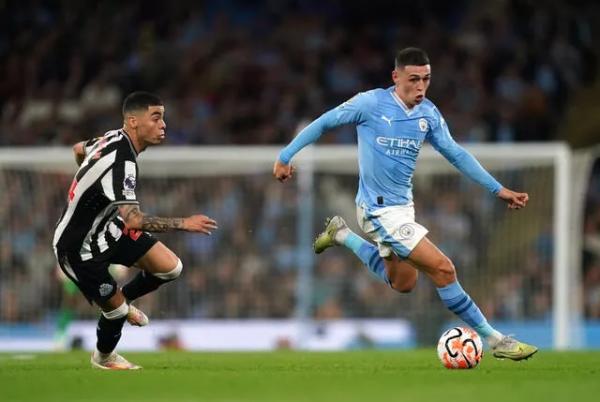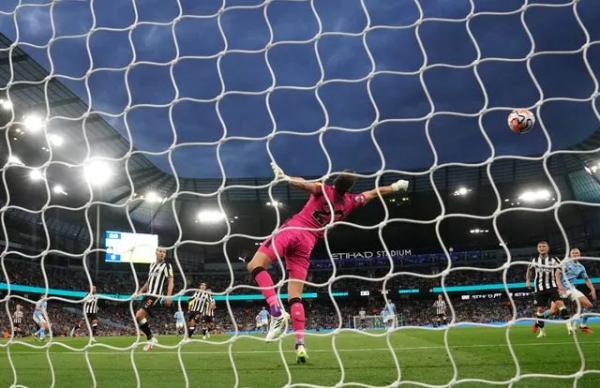
Julian Alvarez’s fine first-half strike handed Manchester City a hard-fought 1-0 win over Newcastle in their first home match since winning the treble on Saturday.
The World Cup winner curled a shot into the top corner after 31 minutes of a tight Premier League encounter at the Etihad Stadium and it proved enough for the champions to claim all three points.
Advertisement
Newcastle, buoyed by thrashing Aston Villa 5-1 in their season opener last week, had travelled in hope of claiming their first league win at City for almost 23 years.
Yet the hosts, despite making just two changes following their draining European Super Cup venture in Athens in midweek, were too strong and successfully nullified Eddie Howe’s side.
Advertisement
Pep Guardiola’s men were far from their fluid best, but they produced a professional performance to follow up their opening win at Burnley and in Alvarez and Phil Foden they had the brightest players on the pitch.
Advertisement
Newcastle fought to the end but it ultimately proved a frustrating night for the visitors, who had five players booked.
City started slowly but began to step up the pressure midway through the first half and threatened for the first time when Manuel Akanji curled a long-range attempt over.

Advertisement
Alvarez then whipped in a low cross but failed to find Erling Haaland before Mateo Kovacic and Foden both had efforts blocked.
Foden grew into the game and was a lively presence, having stepped into the playmaking void left by long-term injury victim Kevin De Bruyne.
Foden was instrumental in City’s goal, finding space and darting into the area before pulling back for Alvarez.
The Argentinian then did the rest, picking his spot from the edge of the area and firing a shot beyond Nick Pope.
Advertisement

Foden threatened to seize control of the game and was crudely pushed over by Sandro Tonali after another dangerous run. He then slipped Haaland in on goal but the Norwegian’s low shot rolled narrowly wide of the far post.
Advertisement
Haaland was close again early in the second half, first after holding off Sven Botman to shoot at Pope and then mishitting another shot wide, again from a Foden pass.
City’s failure to kill off the game allowed Newcastle to come back into it in the closing stages.
Harvey Barnes was presented with a good chance after a rare misplaced pass by Rodri, but he shot straight at Ederson from distance.
Miguel Almiron also had a powerful effort blocked but City continually got numbers back and remained dangerous on the counter-attack.
Both Foden and Rodri led late raids from deep, but neither could set Haaland free for the goal that would have sealed it.
In the end, Alvarez’s strike was sufficient and City, who began the evening parading last season’s silverware, could celebrate a job well done.
Sourse: breakingnews.ie